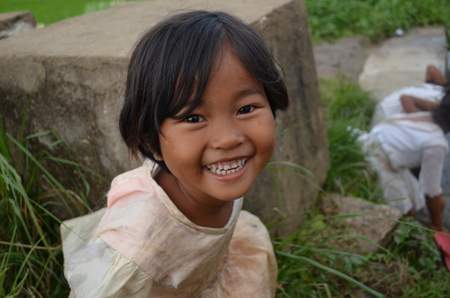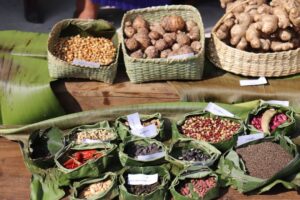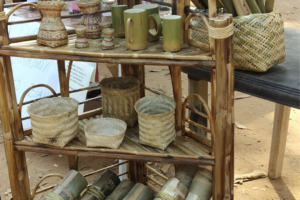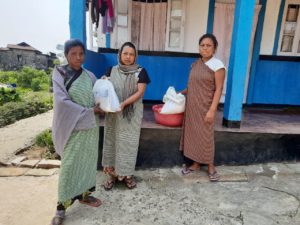Once upon a time…
Many countries were hard struck with famine. It was an evil situation. Many people starved and died. But we were rescued by a revolution that helped these and many other countries flourish with food and more food. Yes, I am talking about the then-so-great Green Revolution. The HYVs, the synthetic pesticides, and intensive techniques solved the problem, at that point in time.
But then…
Eventually, with gain comes pain. There have been worldwide adverse effects of the revolution that detrimentally affected the soil, water, air and most living organisms on earth. Most importantly, the children in many developing areas are the worst victims. The food system is under great threat. We don’t want that unclean food anymore.
But hey, we need to wake up! And most importantly, move on. Move on with our thoughts, decisions, and actions. Know our food and know where it comes from. Explore the biodiverse alternatives to the staple crops of wheat, rice, corn and single varieties of fruits and vegetables. Otherwise, how can we know if what we eat is nutritious at all?
What now and what next….
“It is important to diversify agricultural systems”, said Peggy Pascal from Action against Hunger, specifically stressing the importance of integrating nutrition in sustainable farming practices at the CFS44 side event.
Agroecology, traditional food systems, a more local-centric food production system, empowering small-scale farmers, all this encompass the best steps for sustainable farming practices. There are many success stories at the local level which are moving towards change. They understand the importance of nutrition through food, especially for the children.
However, no results can be achieved if this progress stays at the local level. We also need more support on research and case studies of nutrition and local food systems. Also, it’s high time that all Governments implement nutrition sensitive policies in agricultural programmes and food production.
Cases of malnourishment among children are prevalent in many parts of the globe, especially in the developing countries. Paying attention to their nutrition will be the best investment one can ever make, because the young ones are the future of tomorrow. We need to see them in good health and mind.

Food from other alternative sources
On another note, Gábor Figiczky from IFOAM said, “We need to get people excited about their own food”. This reminds me of the favorite recipes and dishes of the different communities. If you know food, you’ll have a favorite, too.
Foraging is the best example of accessing nutritious food. At least for most areas who have access to forests. Many rural areas surrounded with great biodiversity have the best treasures around them, especially the indigenous peoples. Wild edible fruits and vegetables are more nutritious food sources than the same old boring potatoes one gets from the market. Who knows where those very common potatoes come from, especially if they’re available all year round and come in great quantity. They are most likely a monocrop variety, a staple we have come to depend on in the first world.
There are many people who are aware of the long-term effects of the conventional food production. But there are more people who are not. Food and health consciousness among many individuals have risen, but it is the responsibility of those who have the knowledge and information, to support and share with the communities who are battling with nutrition issues.
Just as Gábor Figiczky puts it correctly, “We can make a difference”. And that difference can start with you. By diversifying your tastes and your consumption.



